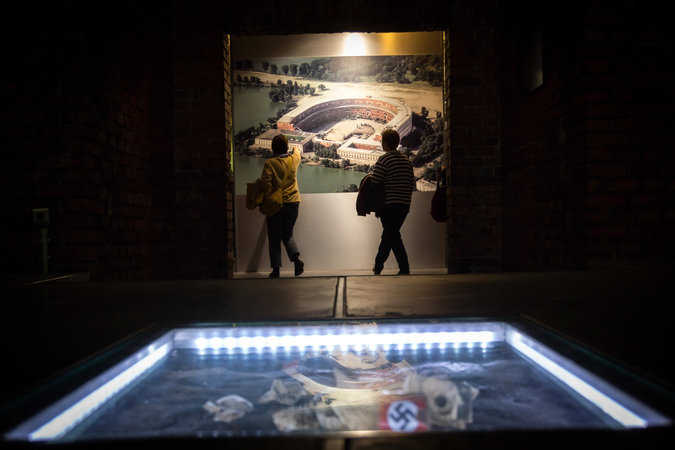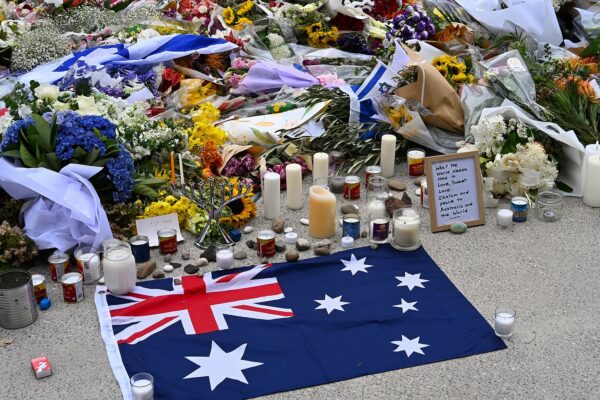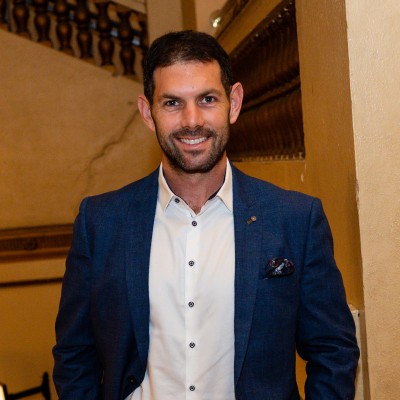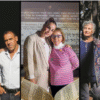New York Times, by Alison Smale
NUREMBERG, Germany — In this city, the rallying point for Hitler, is the largest piece of real estate bequeathed by the Nazis, and a burden only increasing with time.
 First comes the sheer physical size: a parade ground bigger than 12 football fields. A semicircular Congress Hall that dwarfs any structure at Lincoln Center. Great Street, more than one-and-a-half miles long, with no structures on either side — a modern Appian Way where the storm troopers strutted between the old Nuremberg of Albrecht Dürer and the rallies idolizing the Führer.
First comes the sheer physical size: a parade ground bigger than 12 football fields. A semicircular Congress Hall that dwarfs any structure at Lincoln Center. Great Street, more than one-and-a-half miles long, with no structures on either side — a modern Appian Way where the storm troopers strutted between the old Nuremberg of Albrecht Dürer and the rallies idolizing the Führer.
Then there are its troubled history and the far stickier question of what to do with it. “These are not simple memorials,” said Mathias Pfeil, chief curator of historic sites in Bavaria, “because they symbolize a time we can only wish had never happened.”
As Germany copes with mass migration and blows to its economy, like the Volkswagen scandal, and to its pride, like the allegations it paid bribes to secure its hosting of the 2006 World Cup, it also continues to deal with vestiges of its problematic past. In few places are those questions more vivid than in Nuremberg.
Should public money be spent to preserve these crumbling sites? Is controlled decay an option for anything associated with the Nazis? Or have Hitler and his architect, Albert Speer, locked future generations into a devilish pact that compels Germans not only to teach the history of the Thousand Year Reich the Nazis proclaimed here but also to adapt it for each new era?
Several dozen experts — and some curious citizens — gathered for a weekend recently to ponder such questions at a forum titled “Preserve. For what?”
The forum kicked off several weeks of events intended to stir citywide discussion before a decision next year on whether to expand existing exhibits and pointers across the four-square-mile site. Participants also pondered whether and how to use apps and other modern techniques to conjure the Nazi universe for present and future generations with no witnesses left to consult.
The forum included speakers like Mayor Ulrich Maly, who argued that there was a clear duty to ensure that Germans and foreign tourists could begin to imagine what unfolded here. For example, the crumbling but still imposing Zeppelin tribune, or grandstand, where the Führer and his henchmen drank in the choreographed adoration from the masses assembled below, features the only surviving lectern where Hitler spoke.
“Each generation has to find its own way to handle Nazi history,” Mr. Maly said.
“We cannot spare them the work,” he said, but can provide the raw material for thought.
“We do not want to prettify anything, but we want to stop the decay,” he said. If so, then whole structures must be shored up, he said, arguing that piecemeal repairs risk further wholesale damage.
One of the forum-related events is an exhibit that traces the Parteitagsgelände, where party congresses were held, since United States troops reached it in 1945 and blew up the towering stone eagle and swastika atop the Zeppelin tribune.
Since that decisive move to obliterate a powerful Nazi symbol, the site has been many things to many people. In 1955, the evangelist Billy Graham preached and rallied thousands. The Sudeten Germans, ethnic Germans expelled in 1945 from their ancestral lands to the east, rallied here that year as well. Their rally, noted the exhibit curator Alexander Schmidt, now looks and sounds like a latter-day Nazi gathering.
In 1978, a year before The Who, Bob Dylan gave a famous concert, playing “Masters of War” and noting, “What a pleasure it is to sing it in this place.”
In 1995, Billy Joel and his half brother, Alexander, a classical musician, performed here, honoring their father and grandfather, who came from Nuremberg and fled the Nazis.
Mr. Schmidt, a historian at the museum that opened here in 2001, showed some stills from an iconic early 1960s German documentary, “Brutality in Stone.”
“These buildings are not harmless,” he emphasized. “They have to do with the Nazis.”
Ulrich Herbert, a historian and professor at the Albert Ludwigs University in Freiburg, said the site was important not least because “this is a place where you can understand how the Nazis succeeded in winning people over.” It was here, he noted, that the party staked its claim to absolute power “with an intimidating production that enshrined a cult of the Führer.”
That “intimidating production” was chronicled and partly fashioned by Leni Riefenstahl in her 1935 documentary, “Triumph of the Will,” filmed here at the previous year’s Nazi party congress.
Her glorification of Hitler — right from the opening when he flies through clouds, descending on Nuremberg like a god from the heavens — skipped features now noted in the city’s museums: the beer-swilling squalor in the city and parade grounds, and the anti-Semitic race laws that Hitler signed during the 1935 party congress here and thus bear Nuremberg’s name.
And naturally, Ms. Riefenstahl had no hint of the justice that would finally be served here, at the Nuremberg war trials started in late 1945, on men like Hermann Goering, Hitler’s second in command.
Courtroom 600, where those trials unfolded, is now part of another museum, across town. Featuring among other treasures the statements of the lead United States prosecutor, Justice Robert H. Jackson, the museum traces a direct arc to present tribunals of international justice in The Hague.
Up to 250,000 people, half of them foreigners, now visit the museum at the site of the party congresses each year. Northern Bavarians in their early teens pay compulsory school visits, experiencing what Mr. Herbert calls “the German peculiarity” of discovering and taking responsibility for the Nazi past, making being German “different than being Swiss.”
How modern the memorials and museums here should be was one point of heated discussion among the academics. A British historian, Neil Gregor of the University of Southampton in England, who has chronicled Nazi Nuremberg, argued hardest for contemporary themes, such as refugees, and making the debate more multiethnic.
Others wanted the focus firmly on the Third Reich.
Nurembergers younger than 25, who have grown up in a united Germany with no memory of the United States troops who left here in 1994, scarcely have the same interest in or sensitivities to the Nazi structures as their parents, said Michael Husarek, a father of six who is deputy editor of the local newspaper Nürnberger Nachrichten.
“For the young, they don’t have the same fears of contact with, say, the parade ground,” he said. “It has always been part of their lives.”
On a recent Saturday afternoon, local youths played hockey at the steps of the tribune, while foreign tourists looked at Hitler’s lectern. Rock music blasted nearby.
For five decades, the Americans limited access to Soldiers’ Field, the sports facilities used by the United States military below the tribune. The Americans left, said Mr. Schmidt, the curator, but the Nuremberg Rams football team lives on and practices there.
“And they should stay,” Mr. Schmidt added. “Imagine what the Führer would say. And if he wouldn’t like it, it’s probably a good outcome.”
Original article HERE








